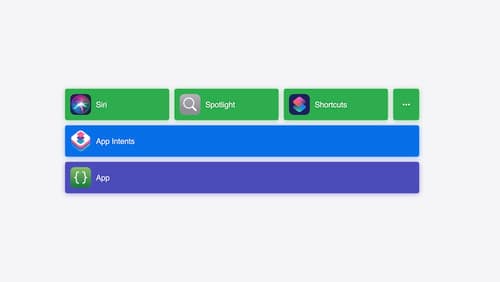What is structural identity?
Asked on 2024-07-31
1 search
Structural identity refers to the concept where instances of a value type do not share state, meaning changes to one value cannot affect other values of the same type. Additionally, value types do not have identity, which means that if two values are equal, they are interchangeable. This is a key property of value types in Swift, such as integers, booleans, and floating-point numbers, and it ensures that instances of these types are independent of each other.
For more details, you can refer to the session A Swift Tour: Explore Swift’s features and design at the 01:42 mark.

Bring your app’s core features to users with App Intents
Learn the principles of the App Intents framework, like intents, entities, and queries, and how you can harness them to expose your app’s most important functionality right where people need it most. Find out how to build deep integration between your app and the many system features built on top of App Intents, including Siri, controls and widgets, Apple Pencil, Shortcuts, the Action button, and more. Get tips on how to build your App Intents integrations efficiently to create the best experiences in every surface while still sharing code and core functionality.

Consume noncopyable types in Swift
Get started with noncopyable types in Swift. Discover what copying means in Swift, when you might want to use a noncopyable type, and how value ownership lets you state your intentions clearly.

Explore Swift performance
Discover how Swift balances abstraction and performance. Learn what elements of performance to consider and how the Swift optimizer affects them. Explore the different features of Swift and how they’re implemented to further understand the tradeoffs available that can impact performance.
